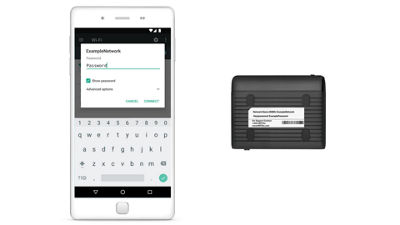Having issues with your Wi-Fi connection? Have no fear! Follow these simple steps to get your Wi-Fi connection up and running so you can continue to enjoy browsing the internet.
|
Due to inactivity, your session will end in approximately 2 minutes. Extend your session by clicking OK below. Due to inactivity, your session has expired. Please sign in again to continue. |
Troubleshooting a Wi-Fi Connection

(Video Length- 2:55 )
troubleshooting-wifi-connection-video: Video Transcript
Troubleshooting a Wi-Fi Connection (2:55)
Troubleshooting a Wi-Fi Connection
Today we'll be discussing troubleshooting a Wi-Fi connection.
A good place to start is to simply power the device off and back on again. This can get you up and running in many cases.
You'll also need to make sure Wi-Fi is enabled on the device and it's in range of the Wi-Fi network!
The usual range for wi-fi routers is about 30 feet, but obstructions like walls can decrease this range.
Electronic items, like microwaves or cordless phones can also interfere with the signal. Make sure you are within range, and your device is showing a strong Wi-Fi Signal.
When connecting to the Wi-Fi network, you can select the option to Show password to make sure there are no typos when entering it in.
If you're not sure what your Wi-Fi password is, or the password isn't working, check the bottom of your router. The default password is usually listed there. It doesn't help if you've changed it, but it's a good place to start.
If you need help with resetting your password, reach out to your Internet Service Provider or the Router Manufacturer for additional assistance.
If you still can't connect, try connecting another device to the same Wi-Fi network. If that device doesn't connect either, then it's a good bet it's the Wi-Fi network or the router that's the issue, not the device.
Another way to identify the issue is to try connecting to another Wi-Fi Access Point. If you're having trouble with multiple Wi-Fi networks, it's likely a device problem. If you only have issues with one specific Wi-Fi network, then the issue is with that Wi-Fi access point, not your device.
When all else fails, try unplugging the router and modem for about 60 seconds, to reset them, then plug them back in. This will reset them with the ISP and may fix the problem.
If that didn't do it, the next step to try is manually removing and re-adding the Wi-Fi network from the device's settings. You can also get the Wi-Fi settings erased by selecting Reset Network Settings, which will refresh all the network settings on the device but won't remove any personal information.
These steps are available for each device, in the Troubleshooting Assistant at verizon.com/support/devices
Just select your device, and search for Wi-Fi issues. You'll also find any additional troubleshooting steps that may be available for your device!
There you go, some basic steps to help you troubleshoot Wi-Fi issues!
Remember, if it looks like an issue with your Wi-Fi access point, you'll want to contact your ISP or Router Manufacturer for additional assistance.